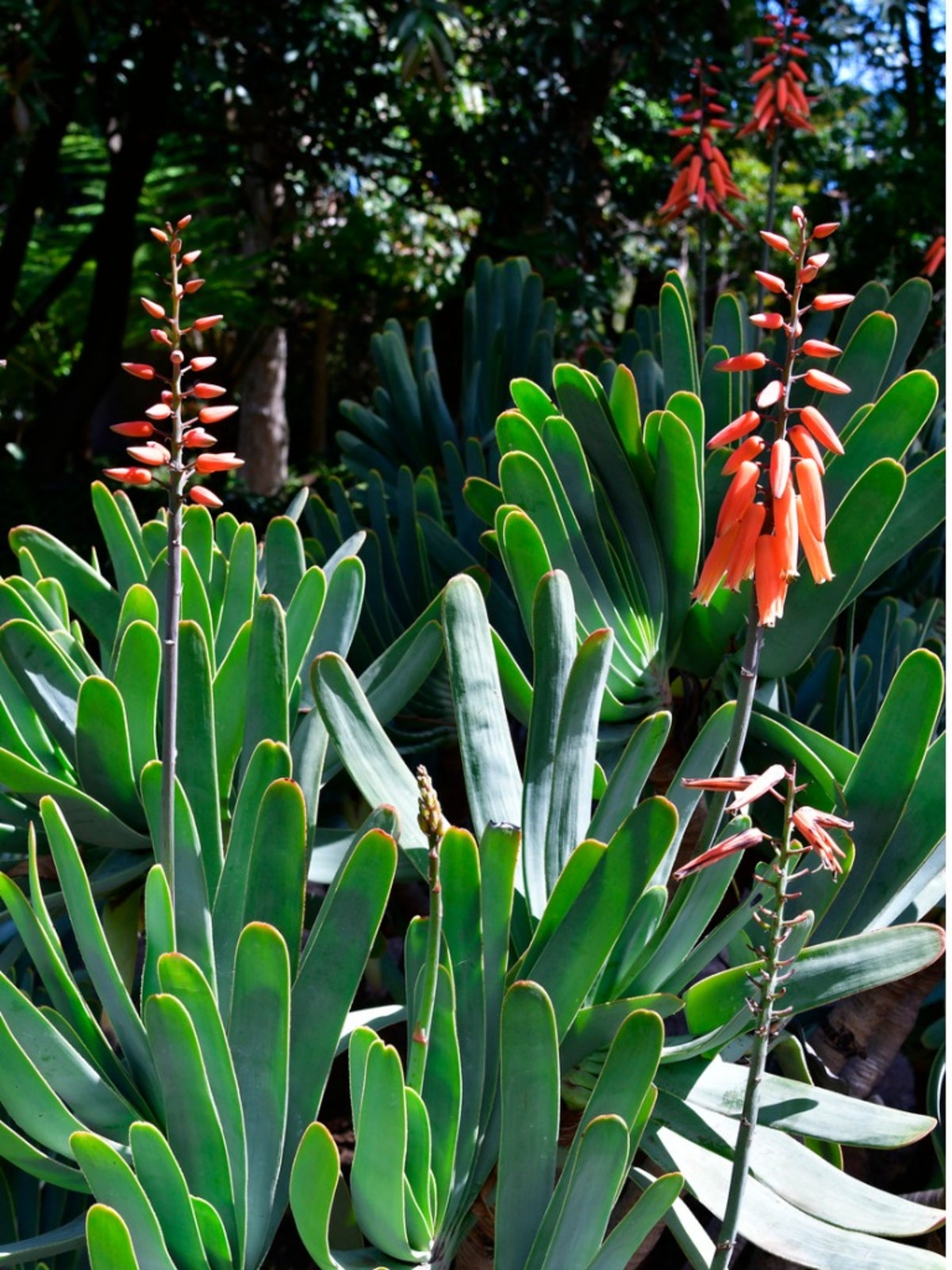Fan Aloe Care Guide - What Is A Fan Aloe Plant


The Fan Aloe plicatilis is a unique tree-like succulent. It is not cold hardy, but it’s perfect for use in southern landscapes or grown in a container indoors. Just make sure you have plenty of room for this South African native. It will eventually dwarf all your other plants, but growing Fan Aloe is worth it. It has a unique and beautiful leaf arrangement that is suggested by its name.
Succulent plants are low maintenance and come in a wide variety of shapes, sizes, and colors. The Fan Aloe vera plant is technically known as Aloe plicatilis, but is often lumped into the aloe vera category. It has plump leaves like aloe vera, but they are much longer and arranged in a fan shape. This Cape native can get quite large but, in a container, it will stay smaller. A fan aloe houseplant will still become a small tree as it matures.
About the Fan Aloe Vera Plant
As mentioned, this is not an aloe vera, but a close cousin. Both can get a semi-woody trunk over time, with numerous branches. Where fan aloe plicatilis differs is in its leaves. They are long and strappy, densely packed together, and reach up to 12 inches (31 cm.) long. The leaves are bluish gray and grow closely in a fan shape. The plant can get between 3 and 6 feet (1-2 m.) tall with interesting gray bark. Each cluster of leaves produces an inflorescence with tube-shaped reddish orange flowers. The stem of the inflorescence soars above the leaves at up to 20 inches (51 cm.). The name "plicatilis" comes from the Latin for 'foldable.'
Tips on Growing Fan Aloe
A fan aloe houseplant requires well-draining soil and bright light but protection from noonday's blaze. Set it a bit back from a southern or western window to prevent burning on the leaves. The plant is found growing wild in the mountains on rocky slopes where the soil is acidic. If you want to grow the plant outdoors, it is hardy to USDA zones 9 to 12. Elsewhere, it can be moved outside for summer but must be brought indoors before freezes are expected. You can propagate this aloe by seed or, for a quicker job, cuttings. Allow cuttings to callus for a few days before inserting them into a gritty medium.
Fan Aloe Care
This succulent is self-cleaning, meaning it will drop old leaves itself. No pruning is necessary. If the plant is in good soil that drains well, it does not need fertilizing. It is adapted to poor soils. Fan aloe is considered a low-moisture plant, but it does best where there is some winter and spring precipitation. Indoor plants need to be kept moist but allow the soil to dry out between watering. Fan aloe is deer resistant, but it is prey to several pest issues. Among these are scale and mealybugs. Part of indoor fan aloe care is repotting every few years to refresh the soil. It doesn't need a large container but should be moved to larger pots as it outgrows its current site.
Sign up for the Gardening Know How newsletter today and receive a free copy of our e-book "How to Grow Delicious Tomatoes".

Bonnie Grant is a professional landscaper with a Certification in Urban Gardening. She has been gardening and writing for 15 years. A former professional chef, she has a passion for edible landscaping.